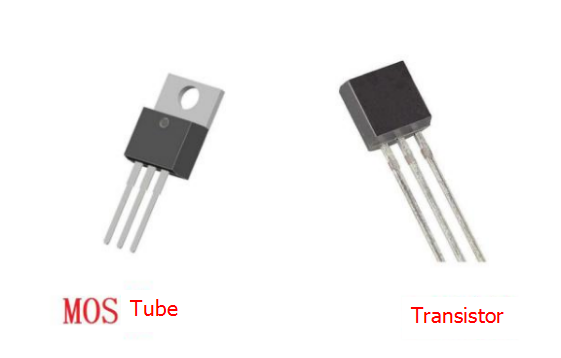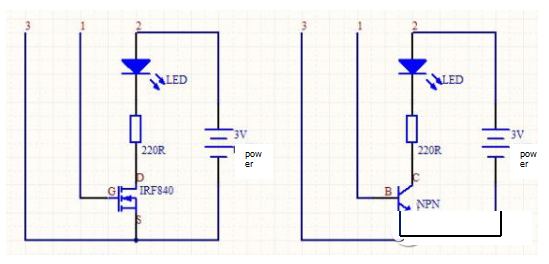What is the difference between a triode and a MOS transistor on an analog circuit?
What is the difference between the MOS tube and the triode? These two components can be regarded as a basic unit itself, a separate device, even if the shell is opened, the naked eye can not find any difference, it is difficult to understand from the working principle, this time from a simple touch light circuit Feel the difference in functionality between the two.
The touch lamp circuit is as follows. The lower right corner of the figure also illustrates the operation of this circuit. If the G pole (gate) of the MOS tube and the positive pole of the power supply are touched by hand, the LED light will be illuminated, and the light will continue to light even if the hand is released. As for why this is so, it can be simply understood as: when the G pole potential rises, a conductive channel is formed between the D pole (drain) and the S pole (source), which is equivalent to a wire, so the line is turned on.

The voltage drop between the D pole and the S pole during conduction can also be measured by a multimeter, and the voltage drop is close to 0 V. If the G pole and the negative pole of the power supply are simultaneously touched by hand, the LED light will be extinguished, which is the reason for this is that the channel is pinched off, and just the opposite of conduction.So what if the MOS tube is replaced by a triode? In fact, it is replaced by a triode, and the LED light of the base of the triode and the positive pole of the power supply (corresponding to the gate of the MOS tube and the positive pole of the power supply) will also be lit, but the LED will be extinguished immediately after the hand is released.
Why is it different from using MOS tube? We recall the conditions under which the triode operates in an amplified state: the emitter junction is positively biased and the collector junction is reverse biased.

If both the base and the positive pole of the power supply are touched by hand, both conditions are satisfied, so the triode is turned on and the LED light is also on; if the hand is released at this time, the collector junction is still satisfied, but the emitter junction is positively biased. It is no longer satisfied, so the triode will be cut off and the LED will go out.
From this, it can be felt that the MOS tube is indeed better than the triode. It is true that the MOS tube has many advantages compared with the triode. The MOS tube is a voltage control device, and the triode is a current control device, so the MOS tube is more energy efficient. Most carriers in the MOS tube participate in conduction, and most carriers and minority carriers in the transistor participate in conduction, so the MOS tube has better thermal stability. MOS tube flexibility is better than triode. The MOS tube is easier to integrate in the process. When the MOS transistor is turned on, the conduction voltage drop is small (close to 0 V, and the triode operates at an amplification state greater than 0.3 V).
If you want to know more, our website has product specifications for the triode and a MOS transistor, you can go to ALLICDATA ELECTRONICS LIMITED to get more information

